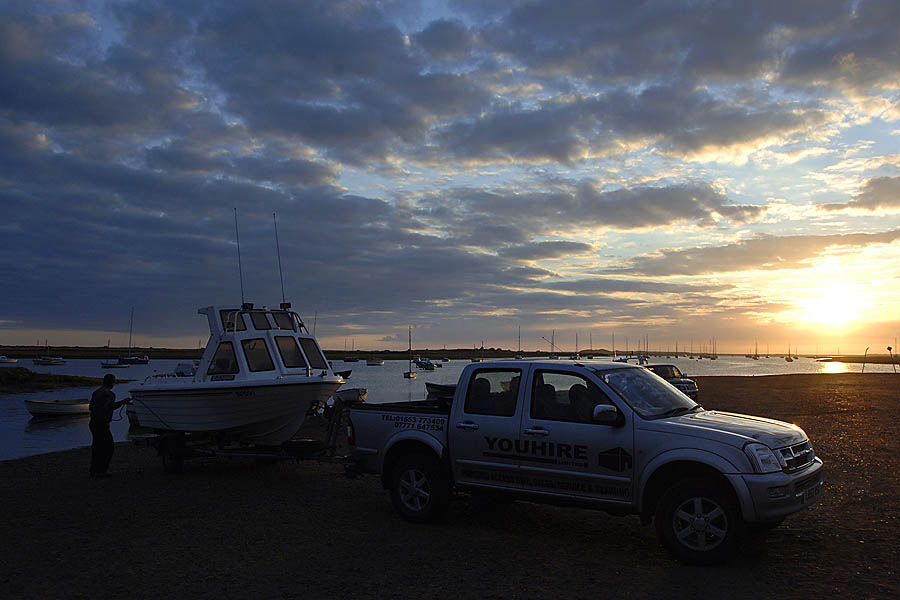 (2006) It's strange how different the fishing at the English coast is from Denmark, which is no more than a couple of hundred miles away. Nevertheless, sea fishing for tope shark in England is something that can make any Danish sea angler drool with envy.
(2006) It's strange how different the fishing at the English coast is from Denmark, which is no more than a couple of hundred miles away. Nevertheless, sea fishing for tope shark in England is something that can make any Danish sea angler drool with envy.
Tope Shark (Galeorhinus galeus)
The tope shark has a huge area of distribution – it is found in most temperate to sub-tropical areas of the world seas. In summer time the shark migrate as far north as Iceland.
It feeds on everything from worms to big fish, such as tuna, in depths up to 1.100 meters.
The maximum weight for the tope shark is probably just above 45 kg / 100 lbs, and up to about 2 meters in length. Maximum age is estimated to 55 years.
Norfolk expedition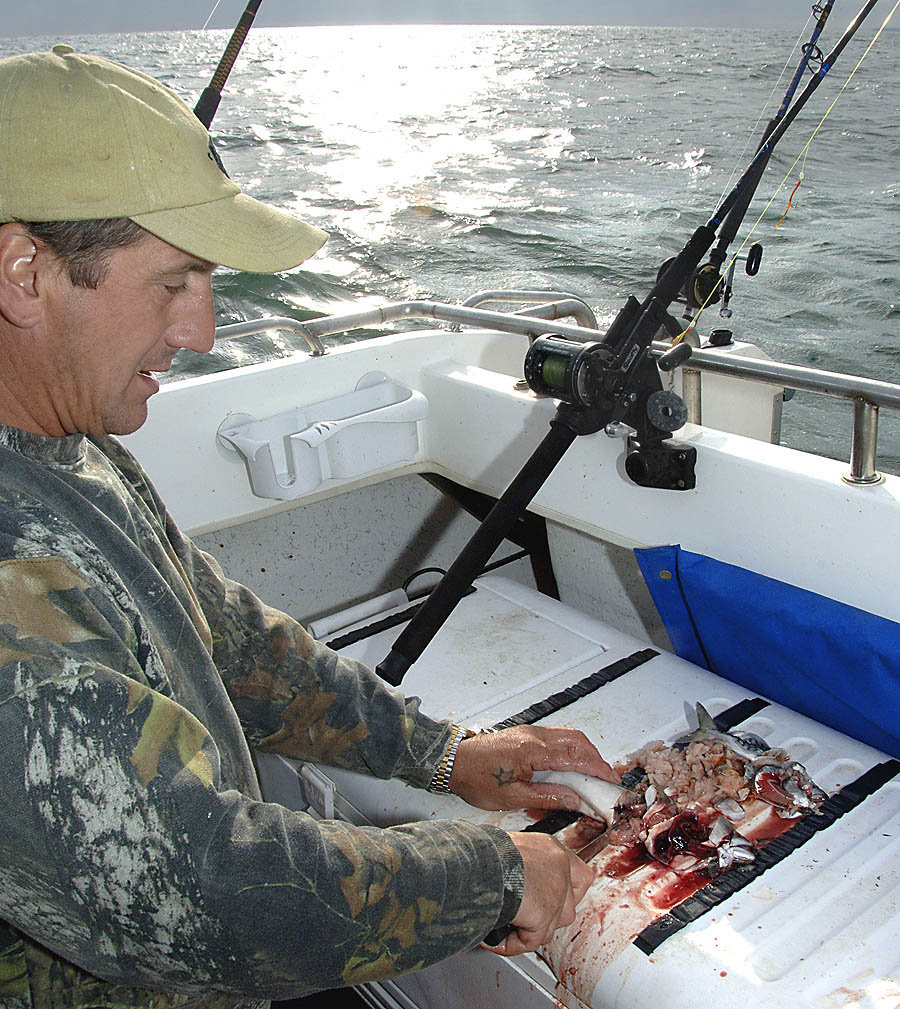
The July morning sun over Brancaster natural harbour was absolutely magical. It was weekend, and several small boats were waiting for the incoming tide to rise enough for them to pass safely through the shallow harbour entrance, out into the North Sea off the northern coast of Norfolk.
As you enter the sea here, you have to decide of your fishing trip is going to be two hours or twelve hours, because of the extreme tide water levels. This is especially hard for people who suffer from seasickness.
However, these tidal conditions are exceptional for the water life here, because of the rich environment of crustaceans and other nutritious sea creatures. Besides the tope shark, the target fish here are seabass (Dicentrarchus labrax), blue skate (Dipturus batis), spurdog shark or piked dogfish (Squalus acanthias), smooth-hound shark (Mustelus mustelus), Atlantic mackerel (Scomber scombrus), brill (Scophthalmus rhombus), turbot (Psetta maxima) and other flounder types.
Thorke and I were invited by my good travel companion and fisherman, Steve Younger, who has successfully fished for the tope off the Norfolk coast for many years.
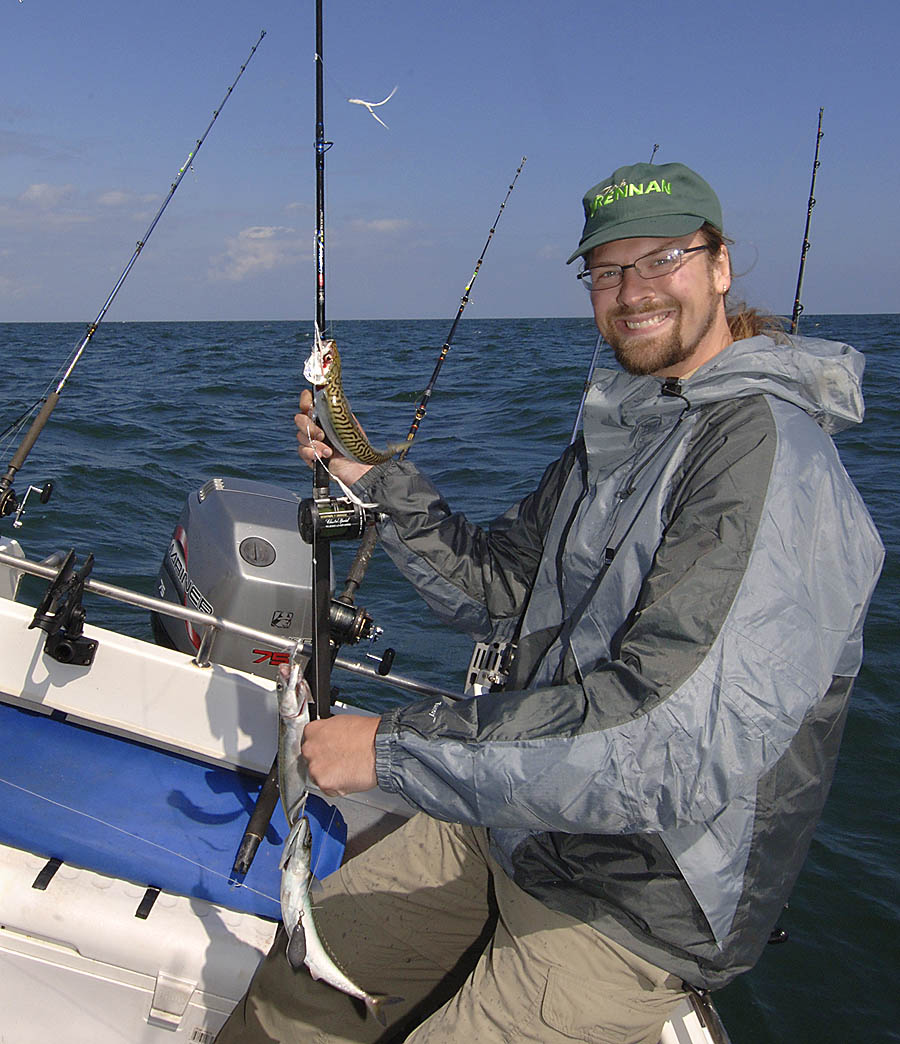 Steve was full of optimism this morning, as he had made a record catch the previous weekend: more than 40 runs from shark, and an astonishing 22 big tope landed. Needless to say, our expectations were sky high, as we made our way over the choppy sea towards the mackerel areas to catch fresh bait.
Steve was full of optimism this morning, as he had made a record catch the previous weekend: more than 40 runs from shark, and an astonishing 22 big tope landed. Needless to say, our expectations were sky high, as we made our way over the choppy sea towards the mackerel areas to catch fresh bait.
I have fished most of my life, and I have fished many places in the world, but in Denmark it is regarded as pathetic that I hadn't yet caught a mackerel, and I must say I had to struggle to get the first one, even there where the mackerel are plentiful. On the other hand, I caught several seabass, which I was very pleased about, and occasionally I even caught two at a time. They catch the seabass to 4 kg there, and they normally catch them on light spinning gear – I must try that some day!
Well, at least Steve & Thorke caught a good bunch of mackerel, so we could start the tope fishing. Steve showed us on his echo sounder the places he normally catch the tope, and the basic features he is looking for are drop-offs, underwater mounds and tidal channels.
However, even with modern electronics, fishing for tope shark is a case of "hit-and-miss": these greedy shark hunt in big packs and move about in a huge area in search of flounders and mackerels. One day you can catch several tope in a specific area, and the next they're gone.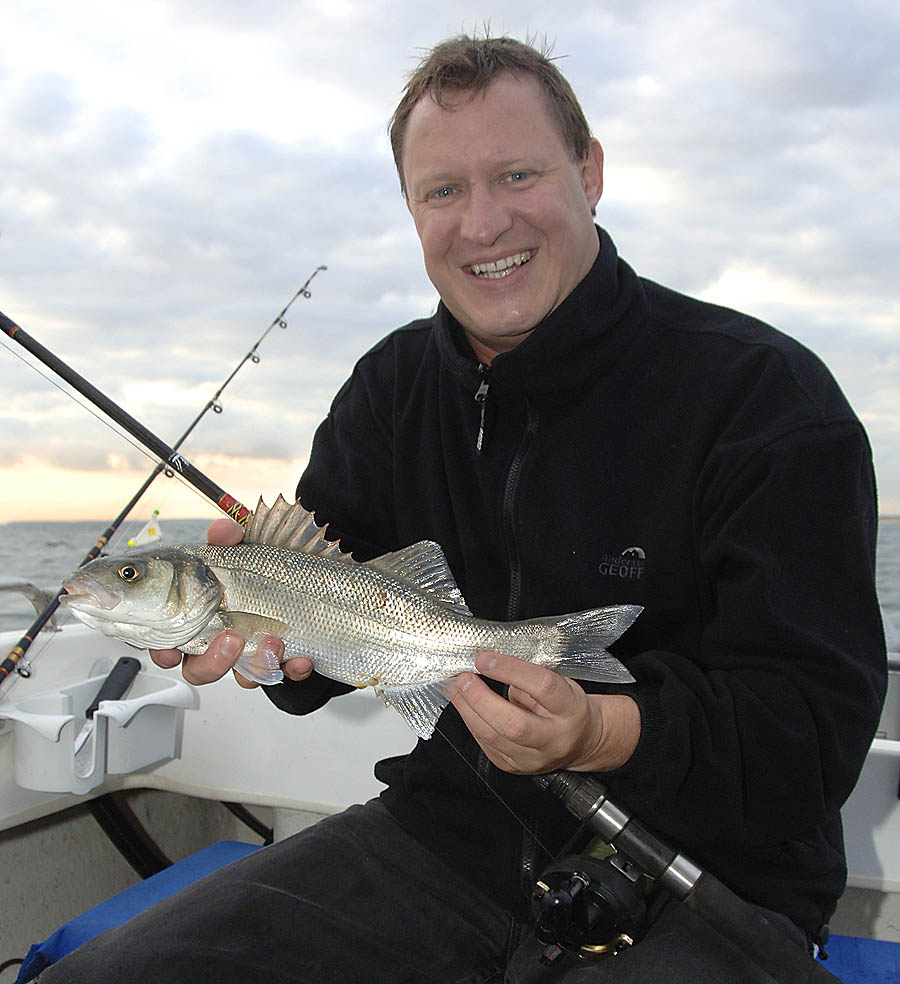
We dropped anchor at one of Steve's favourite spots, and started to chop up mackerels for rubby-dubby, which was used in both a bait-dropper, a net on the side of the boat, and a couple of handfuls straight into the water. The mackerel heads were used as bait on 6/0 circle hooks - the rig itself was 30 cm of 100 lbs wire, 4 metres of 50 lbs rubbing-leader (to cope with the raspy skin of the sharks body), and then 50 lbs braided line. The rods we used were long 30 lbs class boat rods. We placed the gliding rigs both behind the boat and up-tide, using grip-leads to keep the rigs in place.
While we waited for the shark to find the bait, a commercial tour-boat showed up and anchored up near us. The sea was really choppy now, making it extremely difficult to stand up, and it didn't take long before the costumers on the tour-boat were hanging over the sides puking. After half an hour the boat gave up and moved to calmer waters nearer to the coast.
We didn't do much better, though we didn't throw-up. There were no bites, so when some of Steve's friends called on the radio to tell us they had caught three shark, we quickly reeled in the baits and moved off to the other boats.
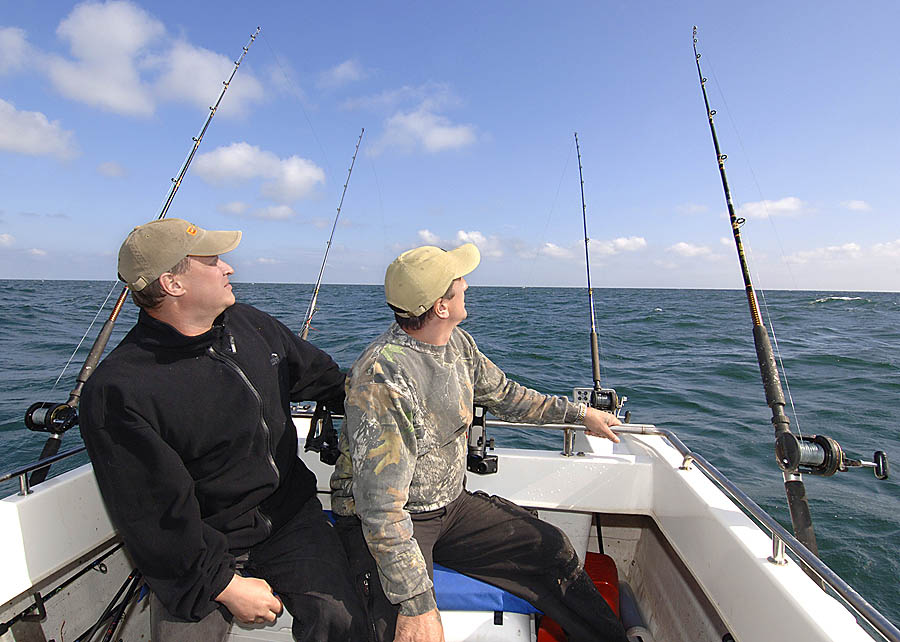 Luck and fishing are two difficult things to handle – and as it often goes, the fish had moved out of the area, when we showed up, and we spent an hour again without any bits. With no bites, we moved yet another time, to yet another "hot-spot", but this time we had lady luck on our side. The rods hadn't been in the water long before a couple of small nibbles turned into a full-force shark strike, bending one of the rods completely around, and the line exploding off the reel. As I was the lucky one to have first bite, I stood up like a drunken sailor because of the waves, and engaged the brake. This didn't seem to impress the shark much, as it kept up the speed even with the pressure of the fishing gear.
Luck and fishing are two difficult things to handle – and as it often goes, the fish had moved out of the area, when we showed up, and we spent an hour again without any bits. With no bites, we moved yet another time, to yet another "hot-spot", but this time we had lady luck on our side. The rods hadn't been in the water long before a couple of small nibbles turned into a full-force shark strike, bending one of the rods completely around, and the line exploding off the reel. As I was the lucky one to have first bite, I stood up like a drunken sailor because of the waves, and engaged the brake. This didn't seem to impress the shark much, as it kept up the speed even with the pressure of the fishing gear.
It took a while to get the shark under control, and with great ease I started to get it towards the surface. Man, what a great experience it was to see this magnificent predator slowly appear from the murky depths of the North Sea. Steve hand-landed the shark with calm experience.
It had the usual efficient shape known from other sharks, it was white and grey, and had strange eyes and an impressive set of teeth. I was very happy with this catch, and we photographed the beast (and me) from all angles. The tope shark weighed between 15 and 20 kg.
Thanks Steve!!!
